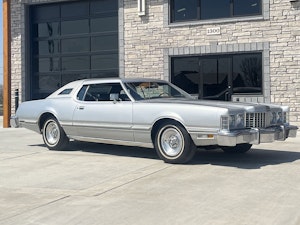Media | Articles
5 tips to prep your turkey of a project car for a Thanksgiving road trip
Any automotive enthusiast knows the drill. Mom’s making her famous Mojave-dry meatloaf, Dad’s out trying to buy pre-cooked turkey after burning up the first one in a cobbled-together fryer, and before the first plate of Hawaiian rolls lands on the tablerunner Uncle Jerry is going to remind everyone that alcoholism runs deep in the family genes. You, on the other hand, need to take your Craigslist-score, rad 1983 Chevrolet Chevette from Tallahassee to Talladega in the late-October quest for heating element–roasted turkey and a little extra appreciation for life and the little things.
And by God, if you dare miss the Thursday afternoon endurance chow, extricating your beloved project car (or truck) will only be that much more complicated in a month, when the task still looms.
Nothing is really keeping that Chevette from being able to truck up and down the Georgia-Alabama state line by design. Some 2.7 million souls some how managed to do it—but that was decades ago. Your Chevette is old enough to have collected a handful of midlife crises, not to mention the mechanical and electrical gremlins expected in a vehicle of its vintage. Even worse, we gearheads are often our own worst enemies, easily stretching worn-out machines knowing things are good enough, a strategy which almost assuredly, potentially maybe, has never back-fired at the worst possible moment.
How can you and your project car avoid becoming yet another aphorism in Uncle Jerry’s arsenal? Ideally, the process starts before you leap across hundreds of miles of concrete and asphalt.
Make a list, fix it now
Where can $20 here and $5 there save you hundreds of bucks later? Tow trucks ain’t cheap, especially late at night, on a holiday, in some town whose identifying sign was obscured by overgrown trees a few lights back and whose most vibrant sign of life is a single stoplight flashing yellow.
Marketplace
Buy and sell classics with confidence
Build up a plan around your machine’s quirks. Figure out its most likely Achilles’ heel, and address it now. Even if you simply rig the component or system to be less broken, small fixes reap generous rewards further down the road. Pictured above is a parking-garage flex-plate replacement that was not fun, not cheap, and not convenient to handle, but I had been ignoring the jumping starter … and, well.
Wiring and electronics
Electrical gremlins are one of the biggest wild cards in an old car. At some point, those work-hardened copper strands of wire will fail without warning, leaving electric fuel pumps powerless, headlights darker than my soul, and a myriad of other comical results that’ll end a trip on short notice.
A small electrical kit, though, can save the day. I tend to stock mine with a simple pair of wire cutters/crimpers, heat-shrink butt and male/female spade connectors, a bundle of spare wire, spare fuses, and a cheap volt meter (any $5 discount special is fine, no love lost if stolen). With this apparatus, you’ll be able to quickly diagnose, patch, and re-run circuits to get back on the road.
Gotta keep rolling
Older cars have a bit of a challenge when it comes to tires. Once-common sizes for 14-inch and 15-inch wheels have become obsolete for many tire manufacturers and shops, whose inventories now favor contemporary low-pros. Even if you do manage to get to a tire shop, with older junk it’s simply a fact of life that the right tire size may not be sitting on the shelf.
A kit for tires can keep you out of a real situation, even in addition to a spare and tools ready in the trunk (who does that, anyways?). In my experience, those cans of fix-a-flat are about as useful as a can of paint for sealing and inflating tires. Tire-patch kits and a small compressor take up about the same space and will cost less than the two-to-three cans of goop required to get the tire back to a drivable state.
Stock up on spare fluids
If it ain’t leaking it’s probably empty. The adage is truer than most of us would like to admit when it comes to rolling project cars. If it’s a leak you haven’t fixed, grab a spare bottle of that fluid before rolling out. That front-main leak on the transmission may be of no consequence back in Tallahassee’s abundance of gas stations and parts stores, but losing all drive gears to low fluid while on the highway plunges you into a much different game of survival. A gallon of ATF is cheaper than a tow truck, for what it’s worth. If your route brings you into colder-than-usual climates, now’s the time to drain out the tap water in your cooling system and throw in at least a little antifreeze to save the hassle of cracked blocks and popped freeze plugs.
Be ready to find new problems
This one is more mental than mechanical. The holidays can be stressful and with that comes the added anxiety of getting through to your destination for others’ sake. In daily driving, most of us are blessed with easily accessible parts stores, places to stop, and, with shorter distances, a lower chance of failure.
The reality here is that during an extended road trip, especially when sustaining highway speeds, heat soaks and wears a project in different ways than plodding around town does. You’re going to find that things that were hardly noticeable before amplify with the miles, that what you thought to be reliable is on its way out, and that there’s just simply a level of patience that must come with the machine. If you replace frustration with curiosity, you’ll make a problem an adventure instead.



















